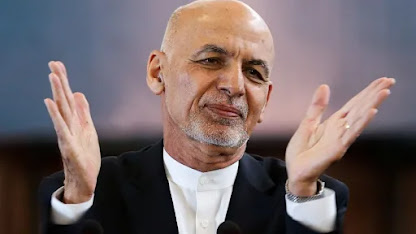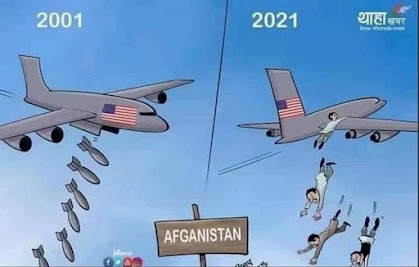Last June I wrote on this blog about the situation of San Quentin (California) death row
inmate James P. Anderson. I’ve been friends with Anderson for the past 2 ½
years and we regularly speak on the phone about his situation inside the prison
as well as things going on in the wider world. I recently asked him how we first made contact and he told me he'd seen an article I wrote in 2005 that made the connections between growing Pentagon budget and cutbacks in social spending. So he tracked me down and called from San Quentin and I accepted the call. The rest is history.
I wanted to
write more about Anderson who has been on San Quentin’s death row since 1979.
On March 13,
2021 Anderson was charged with possession of a ‘deadly weapon’ found in his
cell. He was put in the ‘hole’ (called ‘Little Gitmo’) for more than 90 days
for what was actually a small part from an electrical plug (one inch prong) that
he has used for years to etch many dozens of domino pendants which he
personalizes and gives away free to people and community organizations.
At the time
of Anderson’s placement in ‘Administrative Segregation’ one of the guards was
shown 20 of the pendants hanging by their necklaces in his cell.
 |
An electric prong (male part) that Anderson was accused of having as a weapon
|
The prison
authorities have long known about this art tool, with more than a dozen guards
witnessing him using the prong for his creations. Some guards have even
requested Anderson make them a pendant. (One of his pendants sold for $1,000 at
an auction in the Bay area with the money given to a Palestinian solidarity group that he supports.)
In a
California Supreme Court opinion filed on December 27, 2018 the court defined a
weapon in the following manner: “For an object to qualify as a deadly weapon
based on how it was used, the defendant must have used the object in a manner
not only capable of producing but also likely to produce death or great bodily
injury.”
Where is
my property?
It is
abundantly obvious that Anderson’s art tool was not a ‘deadly weapon’ and
was never used in any threatening way. It was a trumped-up charge.
Louis Wolf
(Co-founder of CovertAction Magazine) has known James P. Anderson, and has been
a committed advocate for his innocence, for more than 25 years. Wolf believes
Anderson is ‘provably innocent’ of his charges.
Wolf (from
Washington DC) wrote prison authorities in June of 2021 asking if this recent
claim of a weapon (and resulting time in the hole) was “another retaliatory
action stemming from James P. Anderson’s filing of a civil suit over the theft
of his property in 2019?”
Since being
recently released from ‘Little Gitmo’ after his detention there, Anderson has
repeatedly requested that his personal property be returned to him. So far
nothing has happened. He has followed all available internal procedures to get
his personal items returned, including asking his court appointed attorneys to
help him, which bore no fruit.
Anderson
reports that without his property, he has no access to “my legal materials
related to my death sentence and appeals, legal notes, etc. Thus, I am unable
to work on my appeal as a result of my property being withheld.”
Anderson
faced the same situation in 2019. At that time the California Department of
Corrections (CDCR) rejected his attempts to recover his possessions by saying, “…if
the Office of Appeals is not able to respond to a claim in 60 calendar days, as
in this case, then the claim must be answered ‘time-expired’. As a result, the
answer provided by the Office of Grievances remains unchanged and this appeal
is now closed.”
Anderson calls
this ruling, “Another back door rule (excuse) which allows CDCR to avoid
responsibility and not respond to complaints by prisoners.” Clearly, he says,
this is a “systematic means of denial for prisoners’ appeals”.
This recent
time in the hole, and confiscation of his property (including his eye glasses and a dictionary he's had for 25 years),
appears to violate state prison guidelines that require that once an inmate
returns from the ‘hole’ they are to have their property returned to them. At
one point Anderson even took the step to write to the prison mental health
department noting that his collective property helps to keep him sane. Still no
positive response.
 |
'Destiny' by James P. Anderson
|
History
of property theft in San Quentin
There is a
history at San Quentin of guards stealing inmates’ property – not just from
Anderson. Anderson sees his recent time in the hole as punishment for attempts
to hold guards accountable for property thefts. He says, “They will retaliate,
they want you to know ‘this is our house’. It’s because they can get away with
it.”
One of the
tricks used by prison authorities to deny the return of property is to request
that the inmate produce a ‘receipt’ for a particular item. In one letter to a
Department of Corrections representative Anderson wrote, “You can’t realistically
expect a prisoner to retain the receipt for an item that was purchased ten
years ago, or longer, not to mention that corrections officers will discard
paperwork they ‘perceive’ as being trash, when it actually has a purpose. You
won’t be surprised to know that entire envelopes of receipts have been trashed.”
In one case
in January 2021 two San Quentin East Block ‘property officers’ were caught stealing
an inmates’ possessions and were ‘Terminated’ but then just two weeks later
were ‘Reassigned’ to another part of the prison without any reprimand. So this
is how things appear to swing inside San Quentin.
Anderson
writes, “For those that care to know, these ‘missing-stolen-lost’ property
items often and ‘mysteriously’ find their way into the hands of informants.
Radios, CD players, equalizers, TV’s, CD’s, beard trimmers, hot pots, tennis
shoes, sweat suits, canteen and quarterly package items are often taken from
one prisoner and given to an informant for ‘services rendered’, all very
clandestinely.”
The legal
consequences
These false
accusations against a prisoner (and resulting punishments with time in the hole) are recorded and placed
in a prisoner’s file and when rare opportunities for appeal hearings arise
these so-called ‘disciplinary actions’ are used by the state prosecutors to
influence judges and/or juries to reject the appeals, thus the prisons stay
full and justice remains denied.
Anderson’s
Federal Public Defender (Central District of California) lawyers have not been helpful to him during these troubles. As it turns out the system regularly
transfers lawyers and for inmates (who have spent years bringing new lawyers up-to-date
on their legal appeals) it means they must start all over again. A vicious
cycle where nothing gets done and inmates have little chance to prove their
innocence.
Anderson
understands this routine quite well so he fights each time one of these unfair
charges are made against him. He works hard to document the truth about each
situation in hopes that someday he will have a chance for an appeal against his
original sentence without these ‘internal prison entanglements' weighing him
down. He relies on friends and supporters (like Louis Wolf) on the outside to
help him correct the record.
Wouldn’t any
person demanding real dignity and real justice do the same thing? I know that I
would. But inside San Quentin they figure that no one on the outside knows or
cares about these cases and these inmates.
 |
A T-shirt design by Anderson entitled 'I didn't have to die' that lists the names of many citizens killed by cops in recent years. One of his supporters is printing the shirts and distributing them
|
Out here in
the ‘land of the free’, people are increasingly re-evaluating the entire ‘criminal
justice system’ – from the cops to the courts to the prisons. We don’t like
much of what we see and hear. And what I am learning from James
P. Anderson does not make me feel any better.
After all
these years, since his imprisonment on death row in late 1979, Anderson still
wants to make his mark on life, for the better. And he wants to be treated with
due respect, as called for under California law. I am impressed by his drive
for fair treatment and his stick-to-it-ive-ness.
Just imagine
how you’d feel if you were in his cell on death row?
 |
| James P. Anderson with his granddaughter |
|
|
For
further information about Anderson, and life in San Quentin, see his article
entitled A Rebuttal to: ‘A Day on San Quentin’s Death Row’ dated January
17, 2016.
See more of his art work here
Bruce
























